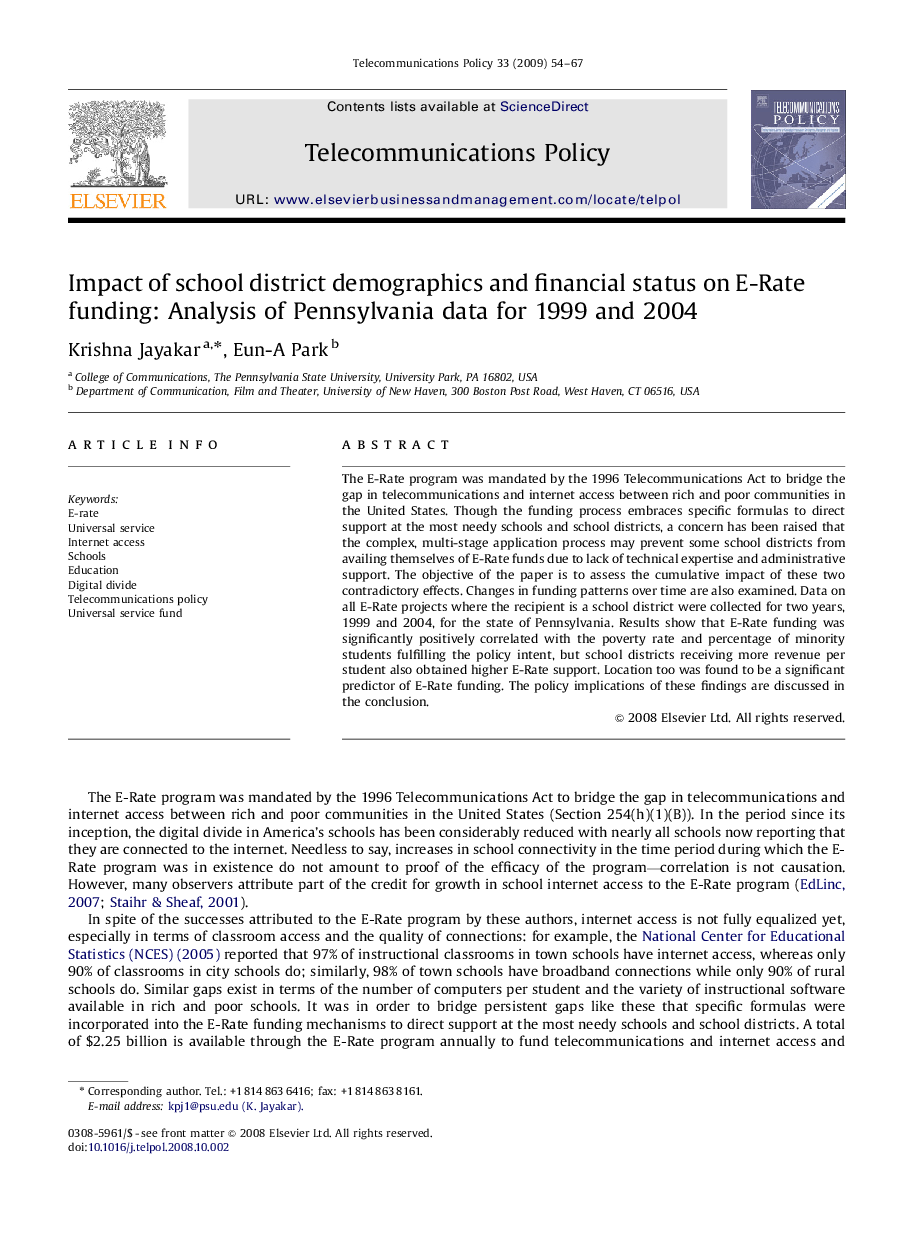| Article ID | Journal | Published Year | Pages | File Type |
|---|---|---|---|---|
| 557079 | Telecommunications Policy | 2009 | 14 Pages |
The E-Rate program was mandated by the 1996 Telecommunications Act to bridge the gap in telecommunications and internet access between rich and poor communities in the United States. Though the funding process embraces specific formulas to direct support at the most needy schools and school districts, a concern has been raised that the complex, multi-stage application process may prevent some school districts from availing themselves of E-Rate funds due to lack of technical expertise and administrative support. The objective of the paper is to assess the cumulative impact of these two contradictory effects. Changes in funding patterns over time are also examined. Data on all E-Rate projects where the recipient is a school district were collected for two years, 1999 and 2004, for the state of Pennsylvania. Results show that E-Rate funding was significantly positively correlated with the poverty rate and percentage of minority students fulfilling the policy intent, but school districts receiving more revenue per student also obtained higher E-Rate support. Location too was found to be a significant predictor of E-Rate funding. The policy implications of these findings are discussed in the conclusion.
